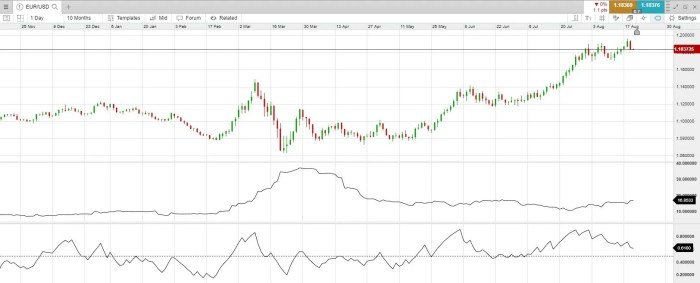Buckle up for a wild ride as we dive into the world of Market volatility strategies. From navigating the choppy waters of financial markets to capitalizing on sudden shifts, this is where the real action happens.
Let’s break down the different types of strategies, explore successful implementation examples, and learn how to stay ahead of the curve in the ever-changing landscape of market volatility.
Market Volatility Strategies Overview
Market volatility refers to the degree of variation in the price of a financial instrument over time. It is a measure of the rate and magnitude of price fluctuations in the market. Volatility can be caused by various factors, including economic indicators, geopolitical events, market sentiment, and company-specific news.
Factors Contributing to Market Volatility
- Economic Indicators: Reports on employment, inflation, GDP, and other economic data can impact market volatility.
- Geopolitical Events: Wars, political instability, and trade tensions can create uncertainty in the market.
- Market Sentiment: Investor emotions and perceptions can lead to rapid price changes.
- Company-Specific News: Earnings reports, product launches, or scandals related to individual companies can cause volatility.
Importance of Market Volatility Strategies
- Protecting Investments: Strategies help investors mitigate losses during periods of high volatility.
- Capitalizing on Opportunities: Effective strategies allow traders to profit from price fluctuations in the market.
- Managing Risk: By having a plan in place, investors can control their exposure to volatile markets.
Types of Market Volatility Strategies
Market volatility strategies come in various forms, each with its unique approach to managing risk and capitalizing on market fluctuations. In this section, we will explore different types of market volatility strategies, comparing short-term and long-term approaches, and examining their risk-reward profiles.
Hedging
Hedging is a common strategy used to protect investments from adverse market movements. Investors can use various financial instruments such as options, futures, and derivatives to offset potential losses in their portfolio. By taking an opposing position to their primary investment, hedging helps minimize downside risk while allowing investors to participate in potential upside gains.
Diversification
Diversification involves spreading investments across different asset classes, sectors, and regions to reduce overall portfolio risk. By not putting all eggs in one basket, investors can minimize the impact of market volatility on their investments. Diversification is a long-term strategy that aims to achieve a balance between risk and return by holding a mix of assets with varying correlation patterns.
Options Trading
Options trading involves using options contracts to profit from market volatility. Investors can take advantage of price fluctuations by buying or selling options, which provide the right, but not the obligation, to buy or sell an underlying asset at a predetermined price within a specified timeframe. Options trading can be both a short-term and long-term strategy, depending on the investment horizon and market outlook.
Comparison of Short-Term vs. Long-Term Strategies
Short-term market volatility strategies are focused on taking advantage of immediate price movements, often using technical analysis and short-term trading techniques. These strategies are more speculative and require active monitoring of market conditions. On the other hand, long-term strategies aim to create sustainable growth over an extended period, focusing on fundamental analysis and strategic asset allocation.
Risk-Reward Profile
Each type of market volatility strategy comes with its unique risk-reward profile. Short-term strategies typically offer higher potential returns but also involve higher levels of risk due to the volatile nature of short-term trading. Long-term strategies, while offering more stability and predictability, may have lower returns in the short term but can provide consistent growth and income over time.
Implementing Market Volatility Strategies

Implementing market volatility strategies requires a systematic approach to effectively manage risk and capitalize on market movements. Successful implementation involves following specific steps and considerations to ensure the chosen strategy aligns with the current market conditions.
Steps Involved in Implementing Market Volatility Strategies
- Conduct thorough market analysis to identify the underlying factors driving volatility.
- Determine the appropriate strategy based on the market outlook and risk tolerance.
- Develop a detailed plan outlining entry and exit points, risk management parameters, and profit targets.
- Implement the strategy consistently and monitor market conditions for any necessary adjustments.
- Evaluate the performance of the strategy regularly to make informed decisions for future trades.
Real-World Examples of Successful Implementation
- During the COVID-19 pandemic, many traders successfully implemented volatility breakout strategies to capitalize on the heightened market volatility.
- Hedge funds often utilize options strategies to hedge against market volatility and protect their portfolios during uncertain times.
Considerations When Choosing the Right Strategy
- Assess the current market environment and determine the level of volatility present.
- Consider your risk tolerance and investment goals when selecting a strategy that aligns with your objectives.
- Evaluate the historical performance of the strategy in similar market conditions to gauge its effectiveness.
- Stay informed of economic indicators and geopolitical events that could impact market volatility and adjust your strategy accordingly.
Monitoring and Adjusting Strategies
When it comes to market volatility strategies, monitoring and adjusting your approach is crucial for success. By staying on top of market conditions, you can make informed decisions and adapt your strategy as needed.
Assessing Strategy Effectiveness
To assess the effectiveness of your strategy, it’s important to track key metrics such as returns, volatility levels, and risk exposure. Compare these metrics against your initial objectives to determine if your strategy is performing as expected.
Making Adjustments
- Monitor market news and events that could impact volatility levels.
- Consider adjusting your position sizes or hedging strategies based on changing market conditions.
- Review your risk management practices regularly and make adjustments to protect your portfolio.
Staying Agile
Adaptability is key when navigating volatile markets. Stay informed, be ready to pivot, and don’t be afraid to make changes to your strategy when necessary.
